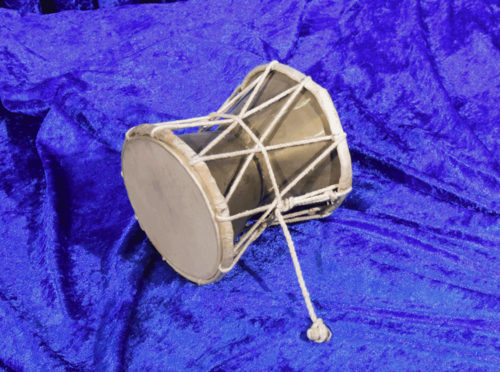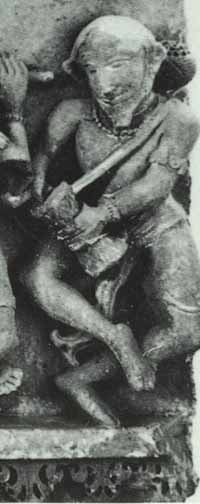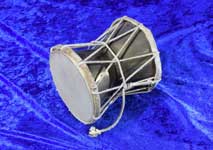Hour-Glass Shaped Drum of India

Damaru is the most common hour-glass drum in India. It has a resonator which is anywhere from 4-10 inches in length and 3-8 inches in diameter. The resonator is usually either metal or wood. There are two drumheads on each side of the resonator which are laced together with cord. Near the centre of the lacing are two loose knotted cords. The knots on each end strike both heads to produce a rattling sound. This is affected by rotating the drum rapidly in alternating directions. The pitch is bent by squeezing the lacing.
The damaru has very strong cultural associations. It is strongly associated with the God Shiva and sadhus (wandering Hindu religious men).
The damaru appears to be the most common representative of a family of hour-glass drums. Although other representatives (e.g., udaku, hurduk, idakka, etc) may be found, they are very rare. This is in stark contrast to the abundance of forms that are found carved on temple walls.
The damaru is virtually identical to the dhad. This is played with the hands instead of knotted chords. The dhad is very popular in the Sikh bardic tradition.

Photo Gallery
Click on Image.

